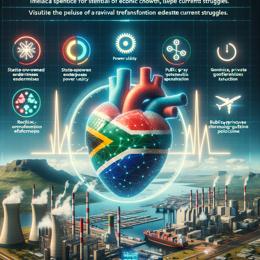Picture: for illustration purposes
Africa's Economic Future Lies in Services, not Manufacturing – CGD Study
A study published on Monday by the Center for Global Development (CGD), a Washington-based think-tank, forecasts that African countries are not expected to emulate East Asia's economic growth model through expanding manufacturing to alleviate poverty. The study predicts a dwindling share of factory jobs across most nations by 2050.
The CGD study indicates that by 2050, the global economy will observe a decline in factory labour, even in lower-income countries with ample cheap labour. One of the few exceptions is inferred to be China, which is predicted to increase its manufacturing output share from 30% in 2018 to approximately 43.8% by 2050.
As China continues to ascend the global manufacturing hierarchy, some room may be cleared for developing countries in Africa, Southeast Asia, and Latin America to transition into lower-end manufacturing industries. However, the research argues that such opportunities will be inadequate to replicate the transformative East Asian model of evolving from agriculture to manufacturing.
In contrast, CGD Senior Fellows Charles Kenny and Ranil Dissanayake suggest that many nations will leapfrog from agriculture directly to services. These sectors are expected to witness a significant surge in employment, driven by technological advancements, even in nations such as Bangladesh and Ethiopia.
Kenny stated, "There’s still a popular idea that low-income countries will transition naturally from being dominated by agriculture to a manufacturing-led economy. But growing evidence suggests that such a transition is unlikely. Instead, we anticipate that farms across Africa and Asia will empty out in the coming decades, replaced by an influx of workers into the service sector."
By 2050, private service sector jobs are forecasted to constitute approximately 37% of global occupations, with 26% share in current lower-income countries, ascending sharply from around 12%.










